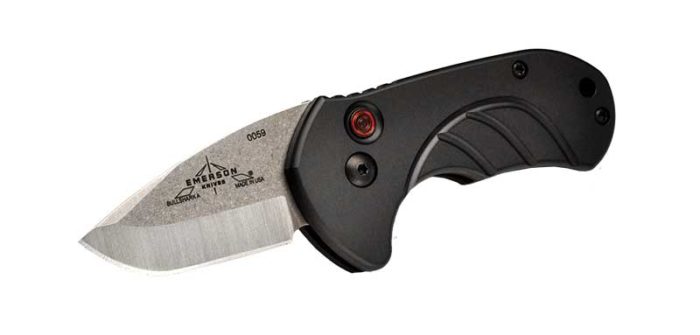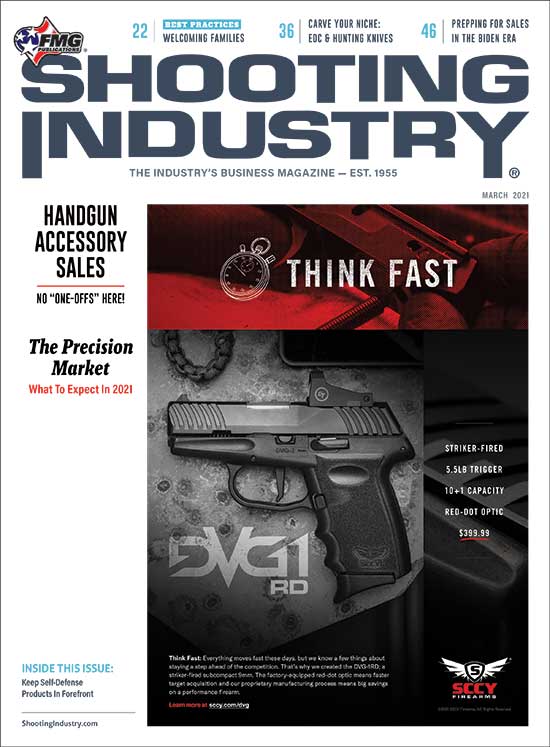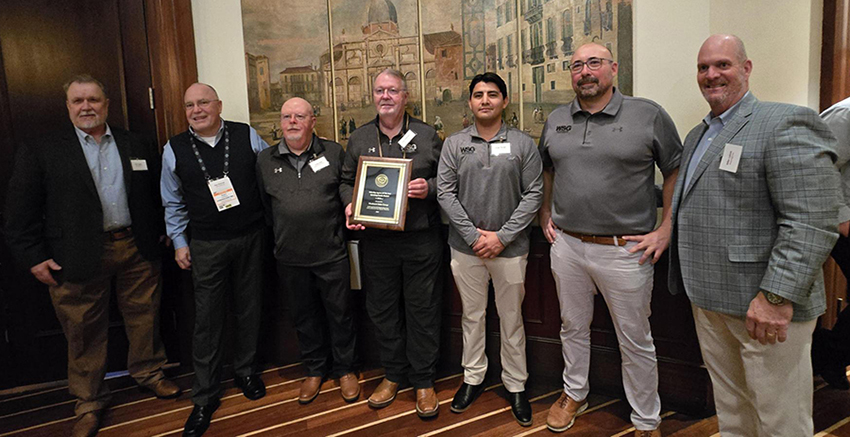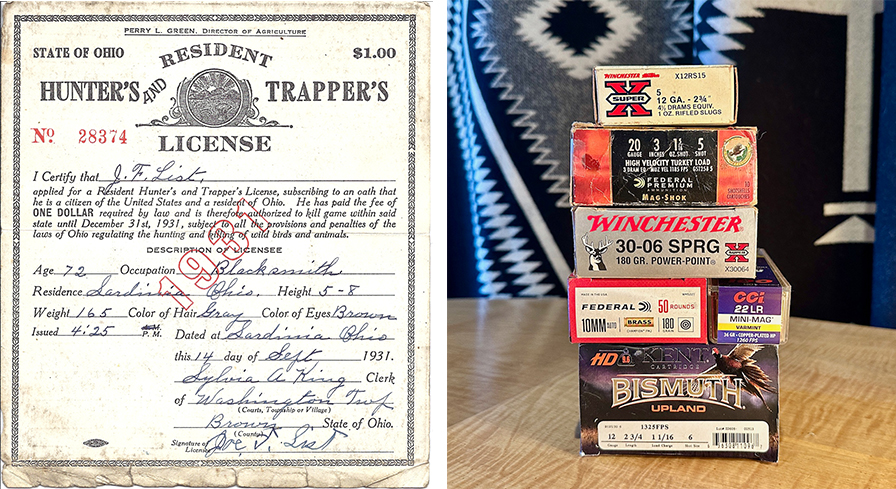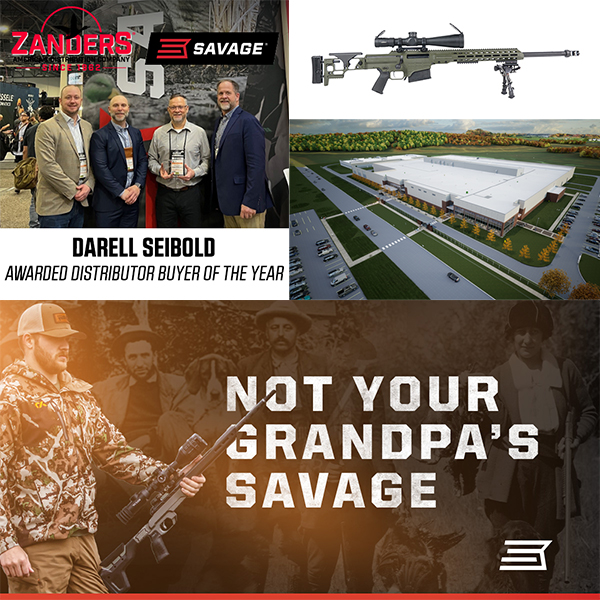Knives For EDC + The Hunt
Serve Up A Robust Cross Section Of Options To Customers
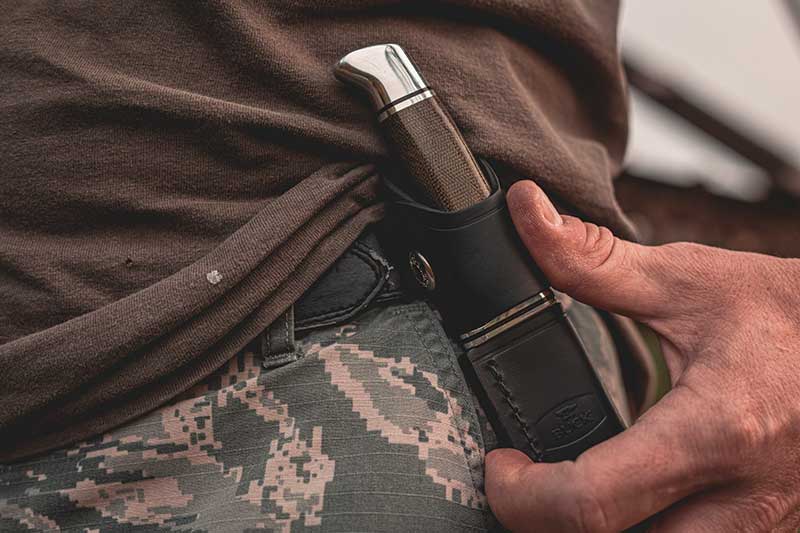
Buck’s classic 100 Series hunting knives received an upgrade for 2021 with the addition of S35VN steel
and OD green canvas Micarta handles. Beginning in March, the 102 Buck Woodsman, 103 Skinner,
105 Pathfinder, 119 Special and 120 General will be offered with this Pro Level upgrade. Image: Buck Knives
It may be easiest to think of your knife-buying customers belonging to one of two distinct groups — those looking for everyday carry options, and those who need a knife for hunting or some sort of bushcraft.
Of course, defining exactly who falls into those groups isn’t always the easiest thing to do — at least not with the EDC crowd, suggests Jesse Bebout, manager of Cherokee Firearms in Springfield, Mo.
“It’s a wide cross section of people. I sell them to guys in their early 20s and I’ve seen women in their 50s buy nice knives,” he said. “EDC covers a lot of different people.”
This creates both challenges and opportunities when it comes to serving this market, particularly when you consider the range of brands, styles and price points you can bring into your store. As with many other categories, it’s the sort of thing where you may do better if you develop a reputation in your community for carrying them.
“Knives have always done well for us, probably because we have a wider variety than most shops,” Bebout noted.
Hone Your EDC Niche
It’s worked so well for the Cherokee Firearms team it’s not unusual for the local Bass Pro store to refer customers looking for a wider variety of Benchmade knives than the big-box retailer typically carries. Having a niche like this can be an advantage in a highly competitive market, with word of mouth often paying dividends. After all, people who like knives tend to have friends who also like knives.
“They’re going to hear about us when they find out where their buddy got his new knife,” Bebout said.
Knives have always done well for us, probably because we have a wider variety than most shops. I sell them to guys in their early 20s and I’ve seen women in their 50s buy nice knives.”
Jesse Bebout, Manager Cherokee Firearms Springfield, Mo.
The shop’s EDC brand lineup also includes Columbia River Knife & Tool (CRKT), Böker, KA-BAR and Leatherman. They aim to cover a broad range of price points — to capture both the impulse buys and the more thoughtful purchases.
“At $25 to $50, they don’t bat an eye. After that, you need to spend some time explaining what they’re paying for,” he offered. “Not everyone can or wants to spend $150 to $400 on a knife.”
Indeed, it’s important to have a grasp on your particular customers’ pricing tolerances.
“There’s a broad spectrum of knives you can buy at different prices,” said John Lundberg, an owner of Big Horn Trading in Sheridan, Wyo. “A lot of folks don’t want to spend a whole lot more than $100 for an EDC knife.”
His shop stocks a range of brands, including Kershaw (the Emerson series has done well), CRKT, AL MAR, Böker, Hogue and Victorinox (Swiss Army knives are popular as gifts).
While Lundberg offers a solid roster of less expensive options, he wants to keep a selection of upper-tier folding knives for customers willing to spend. It’s driven, in part, by the fact the shop is in a retirement community with a fair number of affluent residents.
Of course, there’s a downside to investing capital in pricey knives, according to Lundberg: “A $300–$400 folder may sit there for a while until the right guy comes along.”
For Hunting & The Outdoors
The hunting/bushcraft segment can a bit more interesting, from a pricing perspective. Customers are generally willing to pay a little more for a quality entry-level knife, but they’re less likely to go for the most expensive options on the higher end.
Part of this has to do with the fact folding knives are more expensive to produce than fixed-blade knives. So, it’s easier to find higher-priced folders, Bebout confirmed. It’s not to say you can’t find pricey fixed-blade knives, but those don’t tend to appeal to the hunting/outdoors crowd looking primarily for a tool.
“The $500 fixed blades are kind of show knives. You don’t need one of those to dress a deer,” Bebout stated.
Cherokee Firearms’ hunting brand lineup is pretty much the same as its EDC offerings. Benchmade’s Hunt series is a popular seller, while KA-BAR has a certain nostalgic draw for some people.
“A lot of guys carry it into the woods because it’s what their dads used,” Bebout added.
Back in Wyoming, popular brands include Fällkniven (the F1 is a strong seller), MoraKniv, Gerber, Buck, Ontario Knife Company and TOPS Knives — an Idaho maker popular in the area. Lundberg said it’s common for outdoors types to spend more than their typical EDC counterparts.
“If I were saying I might need to base my survival on a knife, I’d want a quality blade. I don’t want something cheap,” he asserted.
Generally, he prefers to limit inventory to better quality — which





